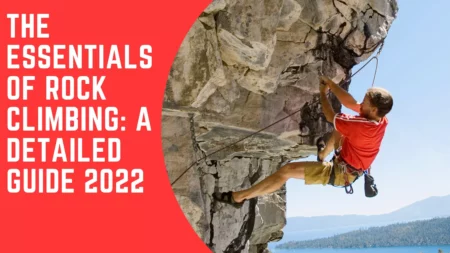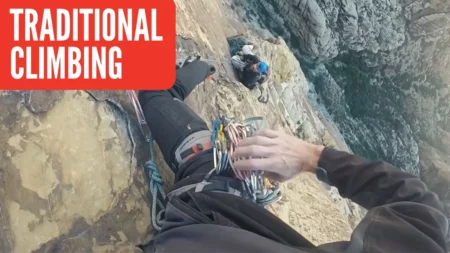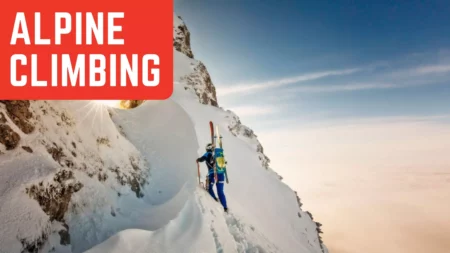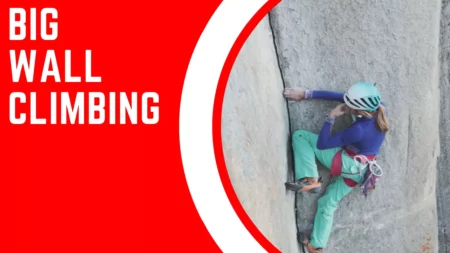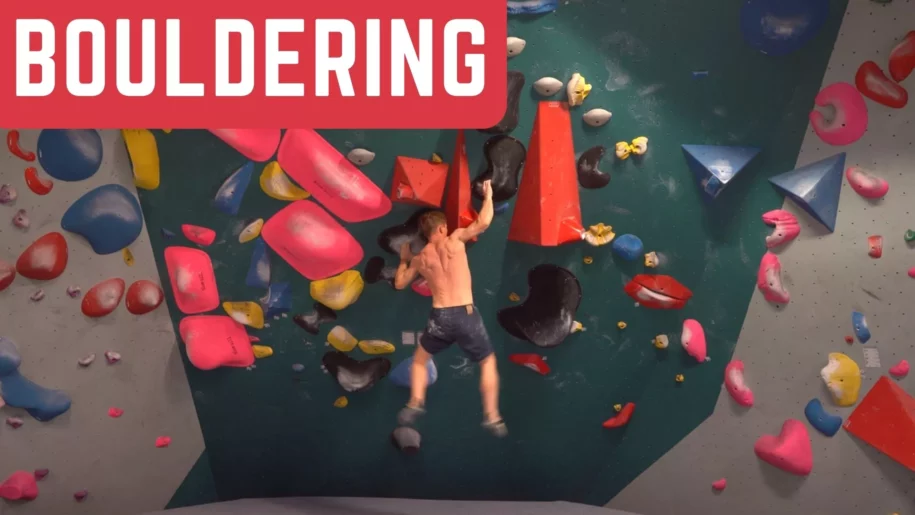
Bouldering is climbing on short, non-vertical walls. The focus is on technique and problem-solving rather than strength or endurance, and the climber uses their own body to tackle the wall instead of relying on ropes or harnesses.
Bouldering can be done anywhere there is an unbroken surface above ground level. It’s a popular activity among climbers due to its low cost, ease of access, and a high degree of personal challenge.
Many commercial gyms offer bouldering walls as part of their climbing gym facilities. Here is a complete guide to this unusual form of climbing and how you can get started in your local area if you’re so inclined!
A Brief History Of Bouldering
Bouldering was first documented in the 1920s in the United Kingdom, although early climbers may have used the technique before.
Bouldering was initially used to train most climbers in the lead climbing technique, but it became a popular sport in its own right in the 1980s.
The significant increase in the popularity of bouldering was also partly due to an increase in the number of climbers and advances in climbing equipment.
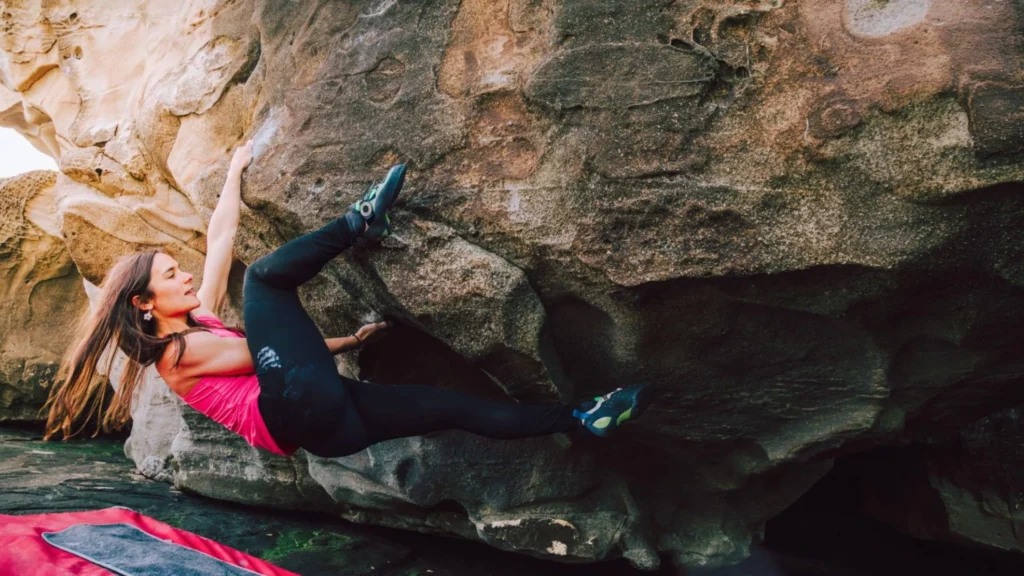
The term “bouldering” was initially used in the UK but is now used worldwide, regardless of the type of rock on the ground. In the US, “bouldering” is defined as climbing shorter than 15 feet, while climbing shorter than 18 feet is known as “high bouldering” in the UK.
Types Of Boulders
A boulder is a large block of natural rock that human hands have not deliberately shaped.
Climbers use many different types of boulders for bouldering, such as sandstone, granite, limestone, and even artificial boulders made from concrete. The type of boulder you select for climbing depends on where you are climbing and your preferences.
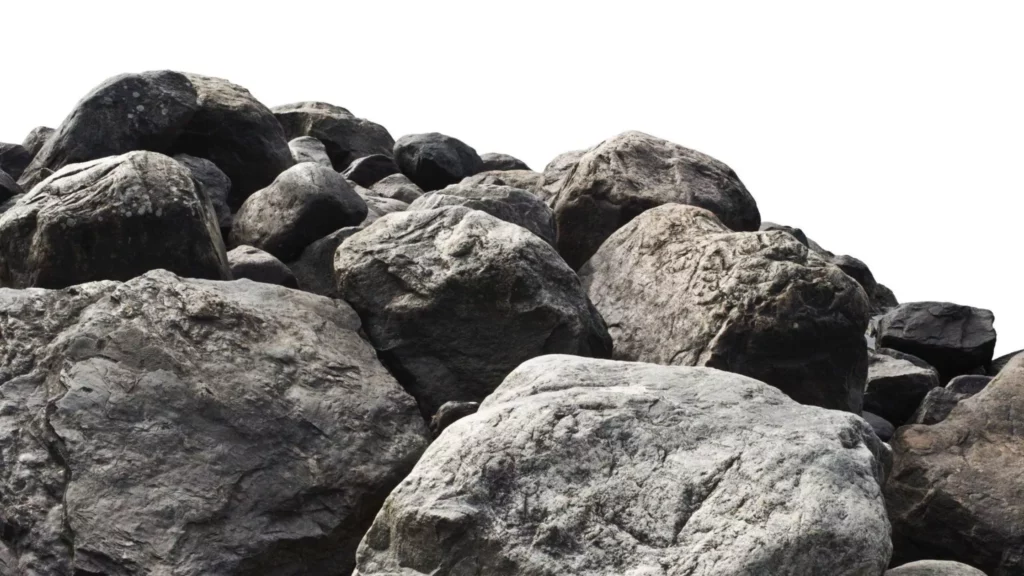
Granite boulders are a common type of boulder used for bouldering. Granite is durable and standard in many regions of the world, so it is readily accessible to many climbers. Granite is suitable for various climbing styles but is best suited to crack climbing.
Limestone boulders are fragile and break easily, so they are unsuitable for complex climbing techniques. While limestone boulders don’t last long, they are a suitable choice for those who want to join a bouldering indoor climbing gym.
Sandstone boulders are very common in the United States and are ideal for bouldering due to their soft nature.
What Do I Need To Try Bouldering?
Bouldering doesn’t require any special equipment other than a pair of climbing shoes. Other pieces of equipment that climbers usually take with them for safety reasons include chalk, crash pads, belay devices, and slings.
Why Is Bouldering So Popular?
Bouldering is an excellent introduction to climbing, as it is less technical and less risky than other forms of climbing.
Bouldering is also suitable for people of all ages and fitness levels, so it is an excellent way to get active and stay fit while having fun!
Bouldering is an excellent way to build strength and endurance in the upper body, core, and arms. Climbers use different grips to pull themselves up toward the wall so all their major muscles are engaged.

Bouldering also burns many calories, so it is a very effective way to lose weight and stay healthy! Bouldering is also a social sport that can be enjoyed with friends.
Many commercial climbing gyms have regular meet-ups for climbing groups so that you can meet other climbers in your area.
Common Bouldering Problems
Boulder problems are the problems that a climber faces when they are climbing. When bouldering, you must plan your route carefully to avoid overshooting the top of the wall. You may also need to make a few attempts to complete the climb. Therefore, ensure you have enough time to try it again if you run out of time.
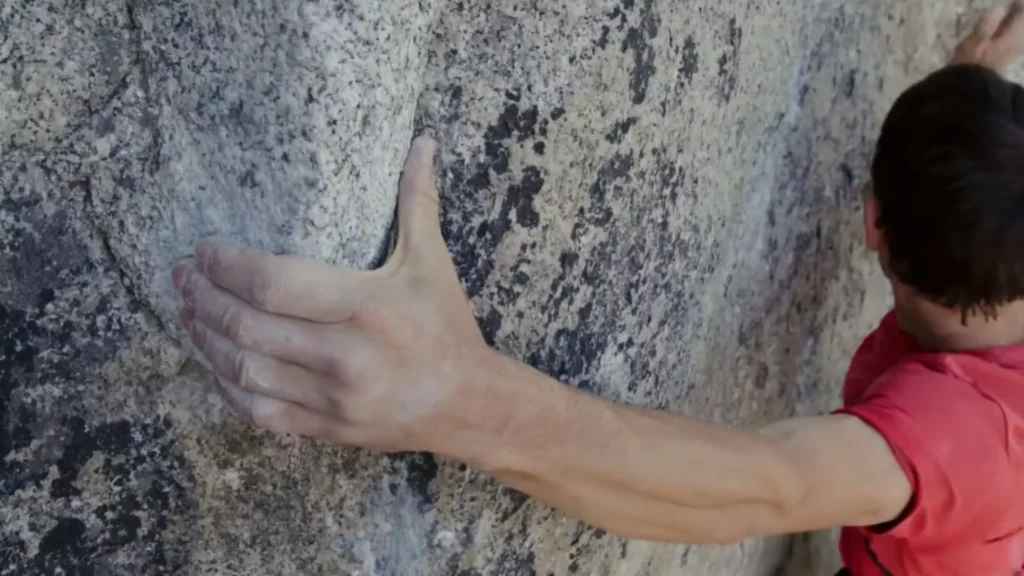
Lack of proper equipment is the most challenging bouldering problem. Make sure you bring the correct footwear, mats, and bags if you plan on bouldering indoors.
Boulder problems can also occur if you are climbing somewhere you are not allowed to. Make sure you are climbing in a safe place, and do not climb on private property without permission.
Bouldering. Prevention Of Injuries
The effective way to prevent injuries when bouldering is to warm up properly before you start climbing. Also, make sure that you maintain proper posture and keep your core engaged while climbing.
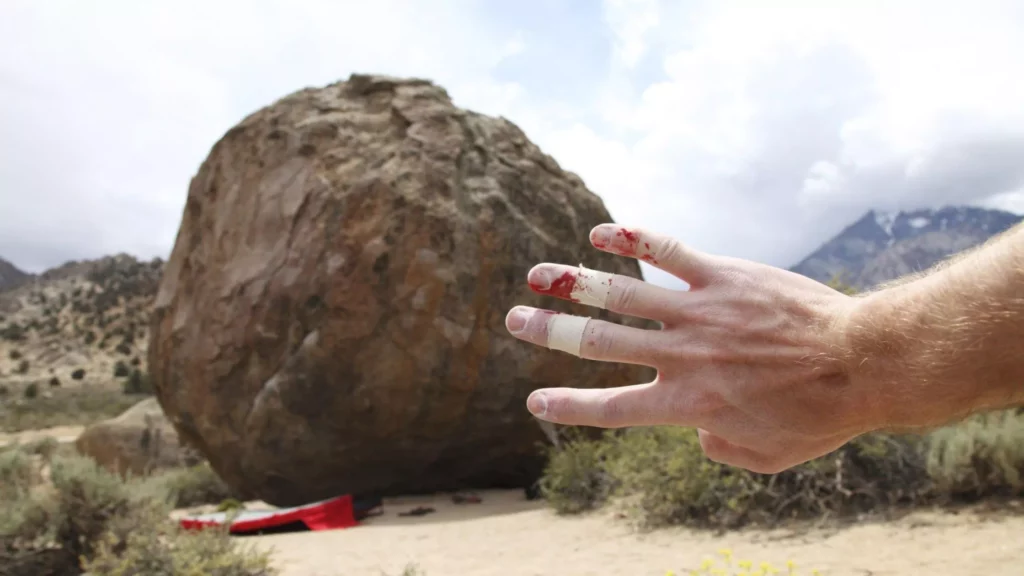
If you feel fatigued, take a break and stretch your muscles to prevent them from cramping up. Bouldering is a full-body workout, which means you are more likely to injure yourself if you don’t stretch and warm up beforehand.
Make sure to include lower body exercises like squats and lunges in your warm-up to avoid knee injuries.
Make sure you wear suitable clothing for bouldering and avoid wearing clothing that is too tight. Loose-fitting clothing will help you stay more relaxed while climbing.
Bouldering. What To Expect Your First Time Bouldering?
Your first time bouldering will feel challenging. That’s normal because you will likely feel overwhelmed and out of your comfort zone.
The best way to get past this is to focus on your breathing and take one problem at a time. Focus on how your body moves and how you can improve your technique. The more you practice, the better you will get.
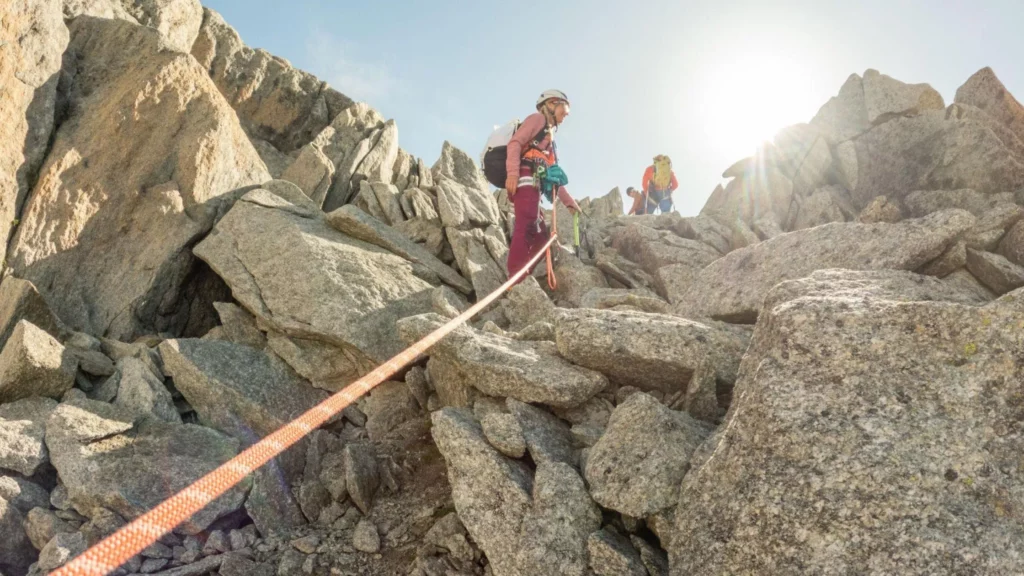
After bouldering for a few months, you will notice a significant increase in your upper body strength.
Be sure to maintain good form when climbing to protect your joints from injury. Over time, you will become more comfortable with the sport, and it will become less intimidating.
The Best Way To Start Climbing
If you want to start bouldering, find a climbing buddy who has experience of bouldering so they can show you the ropes.
You can also try to find some friends or join a climbing club near you. Bouldering gyms are suitable for starting, as they provide a safe and controlled environment.
If you go bouldering outdoors, make sure you climb on the correct rock type. Before bouldering, practice some techniques on shorter walls with lower holds.
This will help you get used to the different types of holds and build some confidence using them before moving on to taller walls. Bouldering is a fun way to get physically active and stay fit while having fun with friends.
Is Bouldering Dangerous?
Yes, bouldering can be dangerous if you don’t know what you’re doing. There is a risk of severe injury or even death if you fall from a high height. Boulderers must be aware of their surroundings and take precautions to stay safe.
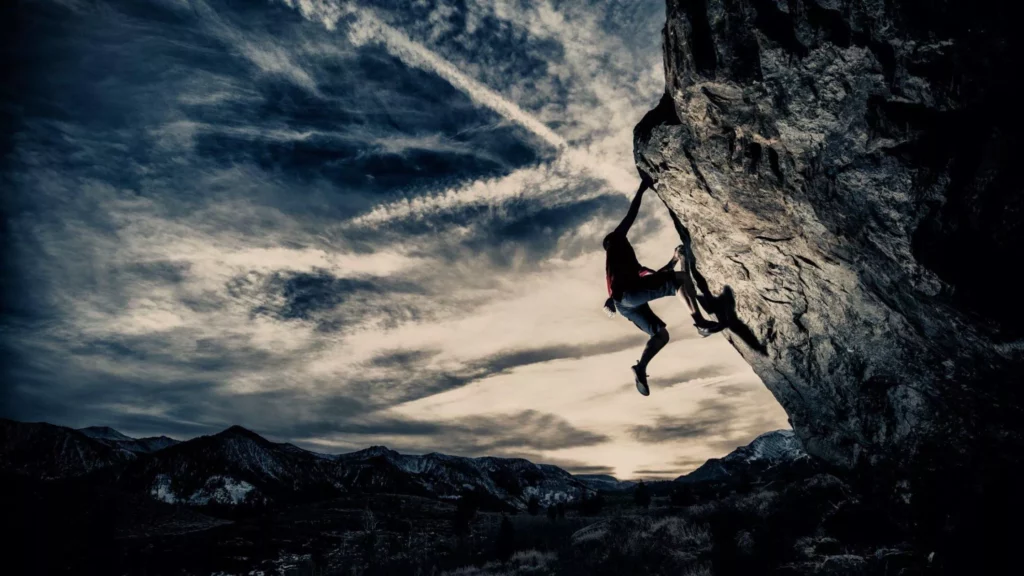
Bouldering is an activity that should not be taken lightly. It is essential to be aware of the risks involved and take the necessary precautions to stay safe.
Bouldering has many dangers, such as falling from a very high height, landing on sharp objects, or being hit by falling rocks.
The most effective way to stay safe while bouldering is to be aware of your surroundings and take the necessary precautions.
Make sure you are well-prepared before attempting any challenging routes, and always have a spotter with you in case you fall.
Famous Places For Bouldering
Bouldering is a form of rock climbing that is typically performed without the use of ropes or harnesses.
Instead, climbers rely on their strength and agility to scale the rock face. Bouldering can be done indoors or outdoors, and many climbers consider it one of the most challenging and rewarding forms of rock climbing.
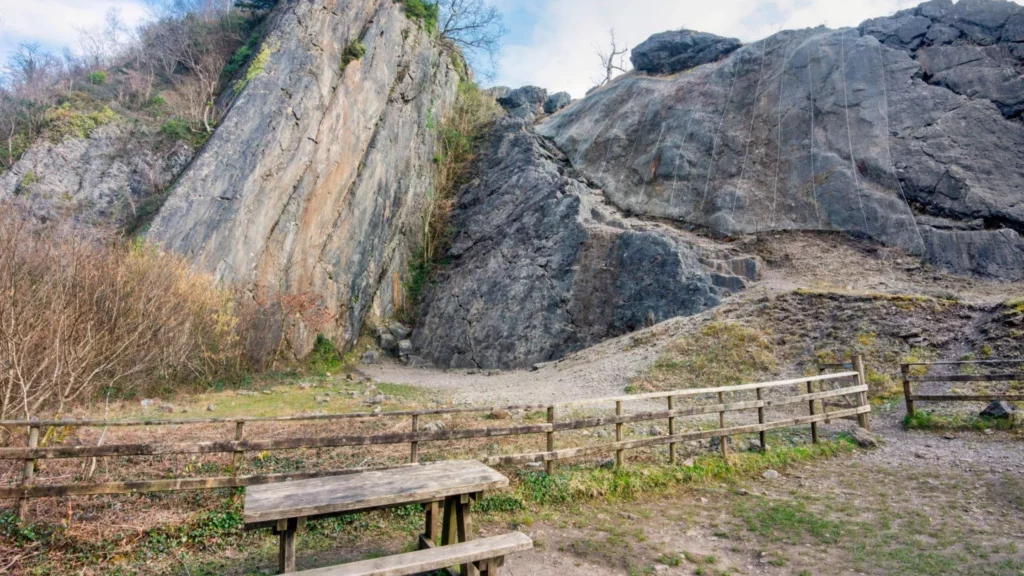
Many famous places around the world are renowned for their bouldering opportunities.
Some popular destinations include the Red River Gorge in Kentucky, the Hueco Tanks in Texas, and the Black Hills in South Dakota.
Each location offers something unique for climbers of all technical skill levels, making them ideal destinations for a bouldering vacation.
Bouldering Grades
Bouldering grades are used to indicate how difficult a bouldering problem is. The V-Scale is the most commonly used bouldering grade system in the United States, created in the early 1990s.
The V-Scale goes from V0 (the easiest) to V16 (the hardest). There are a few variations of the V-Scale, but the most commonly used one is the Hueco Tanks Scale.
Here is a breakdown of the bouldering grades on the V-Scale:
- V0: Very easy
- V1: Easy
- V2: Moderate
- V3: Hard
- V4: Very hard
- V5: Extremely hard
- V6: incredibly hard
- V7: Almost impossible
- V8: Impossible
There are also a few sub-grades within each of the main grades. For example, a V2 could be V2-, V2, or V2+.
The + sign indicates that the problem is slightly more complex than the grade before it. The – sign indicates that the problem is slightly more accessible than the grade before it.
If you’re a beginner at bouldering, it’s best to start with problems that are graded V0-V2. Once you get comfortable with those, you can move on to more challenging grades.
Remember that boulder grades are subjective, so don’t get too caught up in them. The most significant thing is to have fun and challenge yourself.
What Is The Difference Between Bouldering And Rock Climbing?
Who Will Win Bouldering At The Olympics?
Adam Ondra from the Czech Republic is a strong contender in the men’s category. He’s currently ranked first worldwide and has won multiple World Cup events.
He’s also been successful in previous Olympic-style competitions, so he has the experience to perform well under pressure.

Austria’s Anna Stöhr is a name to watch in the women’s category. She’s a two-time world champion and has won more World Cup bouldering events than any other female climber.
She’s also been consistent in her performances over the past few years, so she’s a force to be reckoned with.
Predictions aside, the truth is that anything can happen on the day of the event. The Olympics are always full of surprises, so we’ll have to wait and see who comes out on top!
FAQs
How Tall Are Bouldering Walls?
Bouldering walls can be as tall as 20 feet (6.1 meters) but are typically much shorter. The average bouldering wall is between 12 and 15 feet (3.7 and 4.6 meters) tall.
What do you do in bouldering?
In bouldering, you use your hands and feet to climb rock formations or artificial rock walls without using ropes or harnesses.
Is bouldering good for your body?
Bouldering is a very effective way to improve your fitness and strength. It is also a low-impact activity, which is easy on your joints and muscles. Additionally, bouldering can help improve your balance and coordination.
Is bouldering hard for beginners?
Bouldering can be pretty challenging for beginners, as it requires a lot of strength and coordination. However, with some practice, it can become much more accessible. Start by finding a comfortable bouldering gym and working on your technique. Once you get the hang of it, you’ll be able to progress to more challenging routes.



